An Insider’s Guide to the Ironman World Championship: The Course, The Town, The Weather, and More
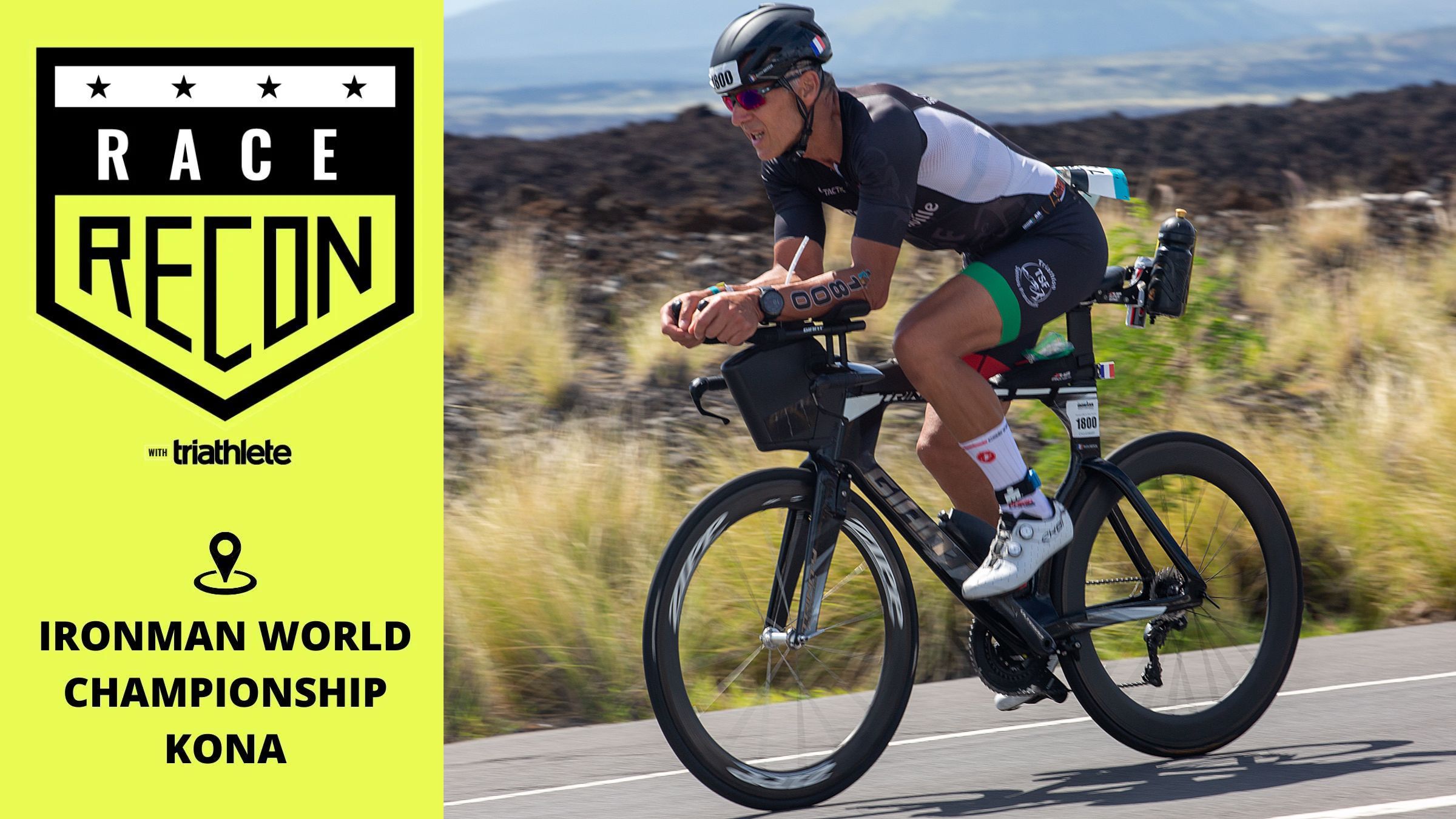
Get acquainted with the Ironman World Championship Kona course with our ultimate race recon guide. (Photo: Brad Kaminski/Triathlete)
Table of Contents
Just a few weeks ago, we saw the thrilling women’s world championship race go off in Nice, France – and now it’s time for the men to take on 2.4 miles of swimming, 112 miles of biking, and 26.2 miles of running on the sport’s most iconic course at the 2024 Ironman World Championship in Kailua-Kona, Hawaii.
Whether it’s your first time competing in Kona, you’re a world championship veteran, or you’re a fan who wants to understand every nook and cranny of the Ironman World Championship experience, it’s important to know all of the inside info. With the help of six-time Kona finisher and triathlon coach Rebecca McKee, we’ll cover everything from the weather to the course and Kona-specific gear—plus, the best places to eat, drink, and relax in Kona town.
Can’t get enough Ironman World Championship coverage? Visit our Kona Hub for news, analysis, history, photo galleries, and so much more – new stories added daily from our team on the ground at the Big Island.
Ironman World Championships Kona: The Weather
In October the forecast in Kona is consistently in the high 80s with the low in the mid-70s. Humidity hovers around 80%, making for a sweaty experience, regardless of what the thermometer says. While the temperature itself is somewhat consistent, the conditions themselves can vary drastically from day to day and make a huge difference in how things play out on the course. Rain, wind, and blaring sun are all possible on race day and there’s a solid chance you’ll experience all of them along the course.Keep in mind that the bike course spans a solid chunk of the northwestern section of the Big Island and the variable weather that Hawaii is famous for means that conditions in town may be drastically different from the northernmost point at the turnaround in Hawi. In preparation for the race, think about (and practice, if possible) heat management strategies and dress for the hottest race of your life.
Coach Rebecca’s Insight
“Even in the unpredictability of the Hawaii weather you can count on one thing… it will be hot,” she said. “In addition to the heat, your day will likely include some soul-crushing wind that can change directions in a blink of an eye. Be prepared for anything but know you aren’t going to be cold.”
RELATED: The Fine Art (and Science) of Fueling for Hot Races
Ironman World Championships Kona: Race Week and Logistics
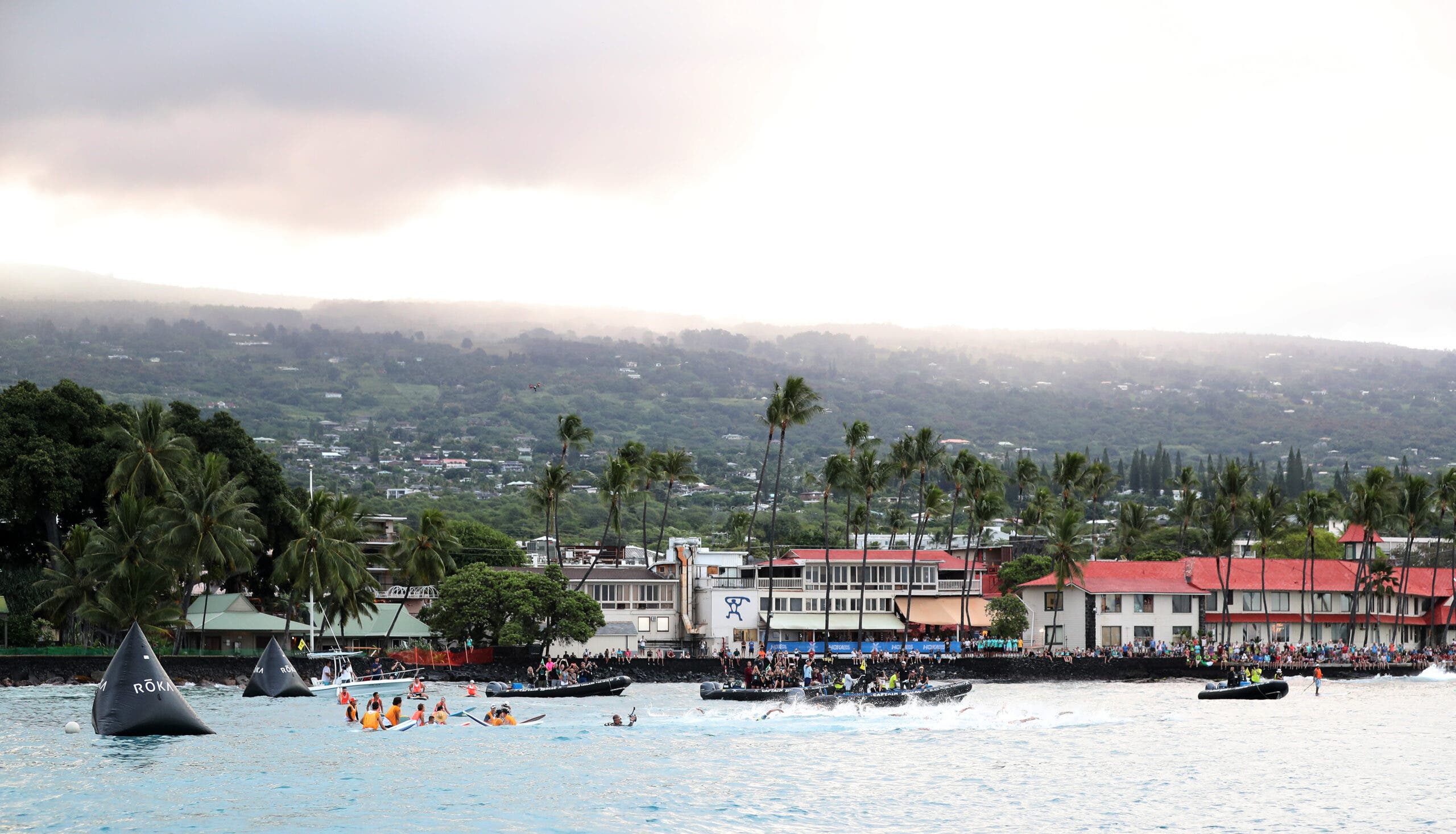
While the week leading up to an Ironman event is always charged, that is doubly true when it comes to the Ironman World Championship in Kona. The vibe of the entire town changes during race week and depending on how you handle that energy, it can be a good or bad thing when it comes to your ultimate race-day performance. Be intentional about how you schedule your time and don’t say yes to every social opportunity. Aim to stay in an air-conditioned condo and plan to have a car to get around town. Know that driving around during race week is slow and parking is arduous, so come with your patience. Go to the grocery store early in the week before the shelves become bare and plan to make most meals. When you do venture out for a meal, you’ll find plenty of triathlete-favored options and race-week specific menus. Some of our favorites: Island Lava Java, Da Poke Shack, Basik Acai Cafe, Huggo’s, The Fish Hopper, and Kona Brewing Pub.
Coach Rebecca’s Advice
“Avoid getting caught up in all there is to do and make sure you allow time to rest during your days, stay hydrated, and eat,” she said. “Keep in mind that it will be hot along Ali’i, and the miles of walking around add up quickly.”
RELATED: 5 Tips For Surviving Race Week
Ironman World Championships Kona: The Swim
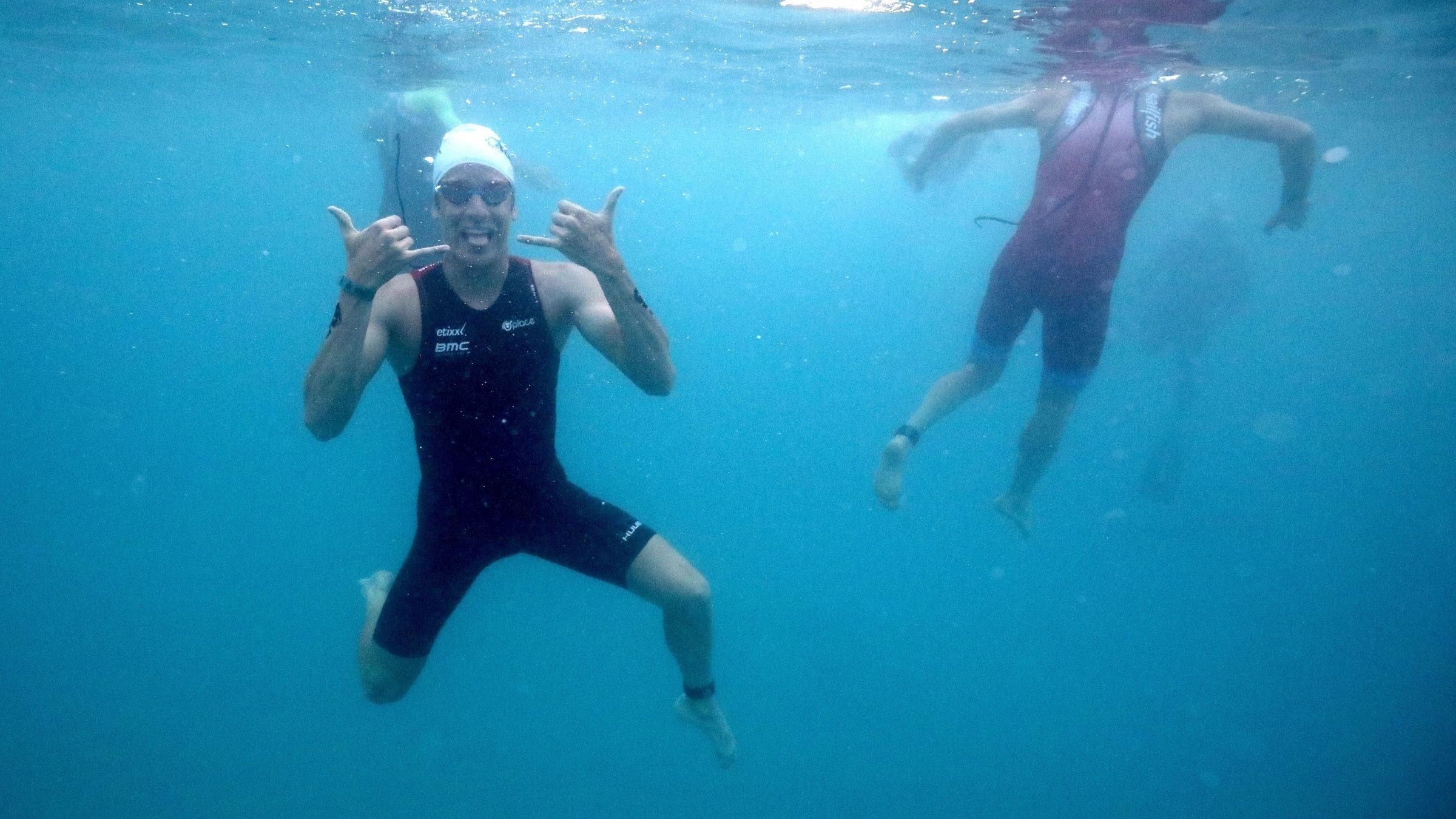
Pre-Race
One of the best parts of race week (and somewhat a rarity when it comes to Ironman swims) is that the swim course is always open for enjoyment and training. (Though this year, it will not be available on Thursday due to the extra race day.) Go out with your family and friends and take in the beauty of Kailua Bay. During race week, Gatorade sets up a gear check so you can be sure your items are kept safe while you’re swimming—but prepare for a line. Once in the bay, you’re almost guaranteed to see wildlife such as tropical fish, sea turtles, manta rays, and maybe even dolphins through the crystal-clear water. Once ashore, you’re likely to spot your favorite pro or Kona legend, as the pier is a popular place to meet and mingle before or after a swim. You’ll be tempted to take on the whole course each day, so be sure to stick to your training plan.
Race Day
Finish-line emotions aside, the swim of the Ironman World Championship is without a doubt the most awe-inspiring portion of the course. The race had held strong as one of the last Ironman events to continue with somewhat of a mass start with pro men, pro women, age-group men, and age-group women each starting the day at a designated time. That changes this year as age groups will be assigned a specific wave start time. On each race day, the pro women and pro men kick off the race at 6:25 a.m. with waves following until 7:40 a.m. Each wave will first swim about 130 yards from the shore to the in-water starting position before going off.
Course
The swim course is one clockwise loop, straight out on the east side of the pier to the famous Body Glove Boat where you’ll make two turns to the right and swim the 1.2 miles straight back to Kailua Bay.
“The swim is hectic at the start, but trust that you’ll find your groove,” McKee said. “On the way out, use the Body Glove boat as your sighting tool. On the way back to the pier, using the shoreline for sighting is a must, as the sun makes part of the course and buoys impossible to see.”
Though there’s not usually surf, there can be small swells parallel to the course. The currents can vary, but typically they push in a northerly direction and help athletes a bit as they turn around and head back to the pier.“The last 500 yards feel like they will never end and part of that is due to the push of the tide change and a little undertow right outside the pier,” McKee said. “Stay calm and know that you’re almost to the finish.”
Gear
The water temperature is always a pleasant 79.5-80 degrees F, which means wetsuits are never an option in Kona. Many athletes opt for wearing swim skins with popular options like Roka’s Viper ($400), Blueseventy’s PZ4TX ($315), Quintana Roo’s Hydrospeed ($200), and Zone3’s Short Sleeve SwimSkin ($400). Odds are you won’t wear a swimskin in any other race, so if it’s not within your budget or you’d prefer not to add to your gear list it’s OK to go without. In terms of goggles, the final half of the swim will be straight into the sun so opt for something tinted.
Coach Rebecca’s Advice
“Before the race begins, pause for a moment to take in the energy at the start,” she said. “The crowds are lining the bay, Mike Reilly is keeping athletes excited and calm on the microphone, the helicopter is hovering overhead, and there are dozens of volunteers in kayaks and on paddle boards. There’s no swim start like it.”
RELATED: Kona Swim Course Recon Video
Ironman World Championships Kona: The Bike
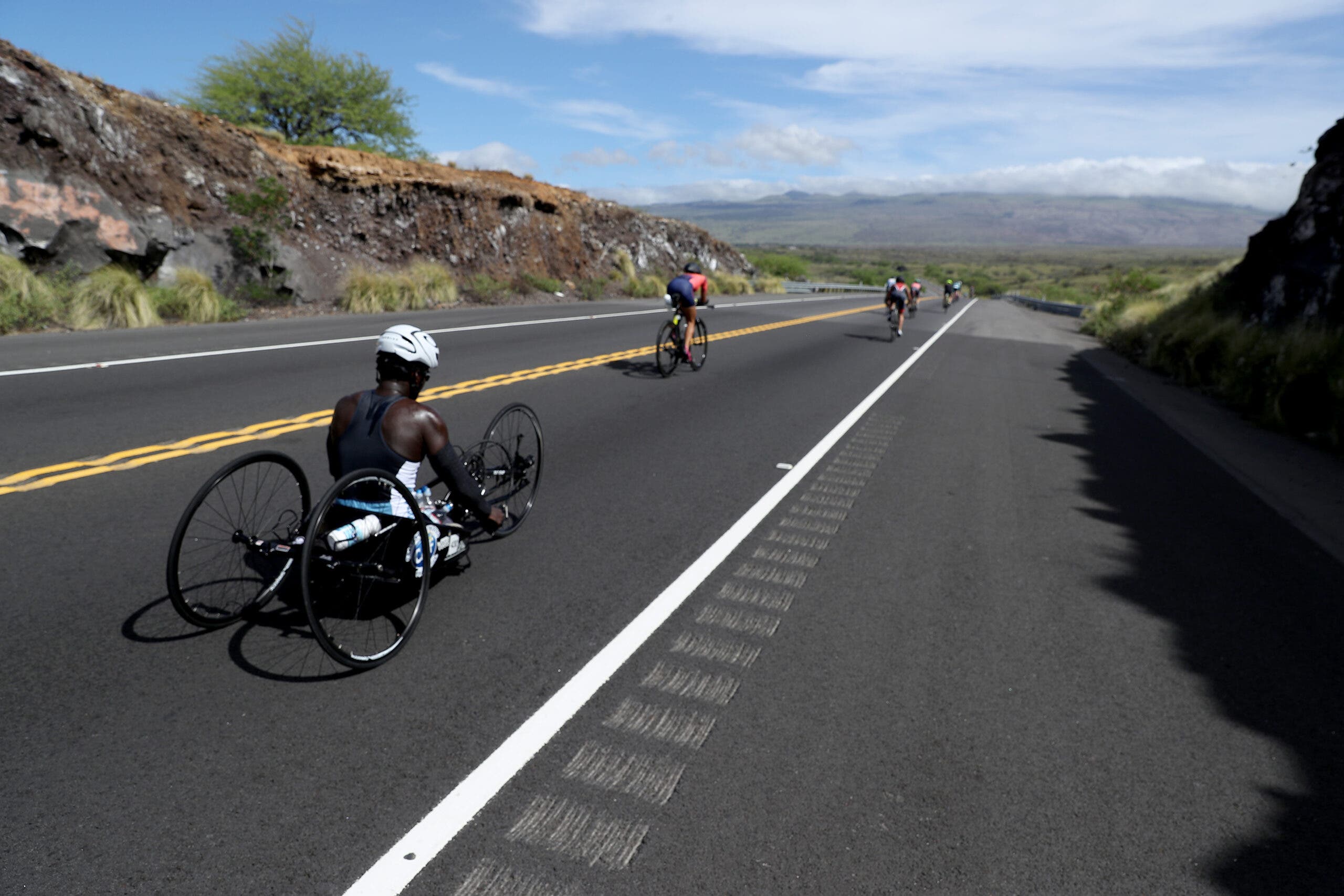
Transition and In Town
Once out of the swim, you’ll navigate through the showers and get your bike bag from a volunteer on the East side of the pier. After gearing up, you’ll head off the pier and reach the bike mount line on Palani Drive. McKee warned that she’s seen too many athletes ruin their race in this moment.“Make sure you are in the right gear and in your shoes quickly because you go around the corner and go uphill immediately,” she explained. “I have seen countless experienced triathletes done with their entire day within a few hundred feet from transition due to broken chains or crashing on this slope.”Then the bike takes you on a short tour of inner Kona. “This section is punishing with four substantial climbs within the first five miles,” she said. “I use this area to get my heart rate under control, get settled into my bike, and get some nutrition in.”
Airport to Waikoloa
The early morning usually means light winds, but the beginning miles on the Queen K Highway feature plenty of rolling hills to keep you challenged. This section takes athletes to the end of the highway and the 40-mile mark of the course. Athletes make a turn, fly down the “Kawaihae Hill,” and around a sweeping corner to turn right on the Akoni Pule Highway and toward Hawi.“This corner is one of the most dangerous sections on the course,” McKee warned. “The road conditions at this intersection are in poor shape with potholes and cracks, so it’s important to sweep wide and be ready to shift for a steep quick pitch.”
Kawaihae to Hawi
From the turn at Kawaihae to the turnaround in Hawi is a little shy of 20 miles and features long rolling hills with steep pitches toward the top.“It will be the longest 20 miles of your day on the bike,” McKee recalled. In addition to the tough climb, “this area offers the harshest weather, and you are as far away from the finish line as you can get.”
Return to Town
At this point, you turn around and head back exactly the way you came. Though it’s not always the case, usually athletes can revel in a tailwind on the journey back to the Queen K. “Typically, the return is 10 to 15 minutes faster depending on the wind,” said McKee.
Once you reach the airport, take intentional time to regroup and make sure you’re where you should be with your hydration and nutrition.“They have changed the course back into the finish line this year,” she warned. “If you have raced before, make sure to look closely at the map as turns in the final miles are different than in the past.”
Gear
For safety reasons (those crosswinds are no joke), solid disc rear wheels are prohibited but beyond that, your typical race setup on the bike will do the trick.
The most important aspect of your bike gear is that it arrives on the Big Island in top condition. If you’re flying with your bike (as opposed to using Tri Bike Transport—which is highly recommended), pack as if your race depends on it. We also recommend including an AirTag or other tracking device so you can locate it if you arrive at the airport, but your bike doesn’t.On race day, several athletes will arrive to transition to find flat tires—don’t let this be you. Know the limits of your tires because if you over-inflate the tires, the morning sun can cause an increase in air pressure and ultimately, a blowout.
Coach Rebecca’s Advice
“The Queen K will make or break you on this course,” McKee said. “How you decide to ride out and back will ultimately determine your fate on the run. Fighting or chasing the wind leads to expending energy—stick to your race plan and have patience.”
RELATED: Kona Bike Course Recon Video
Ironman World Championships Kona: Run Course
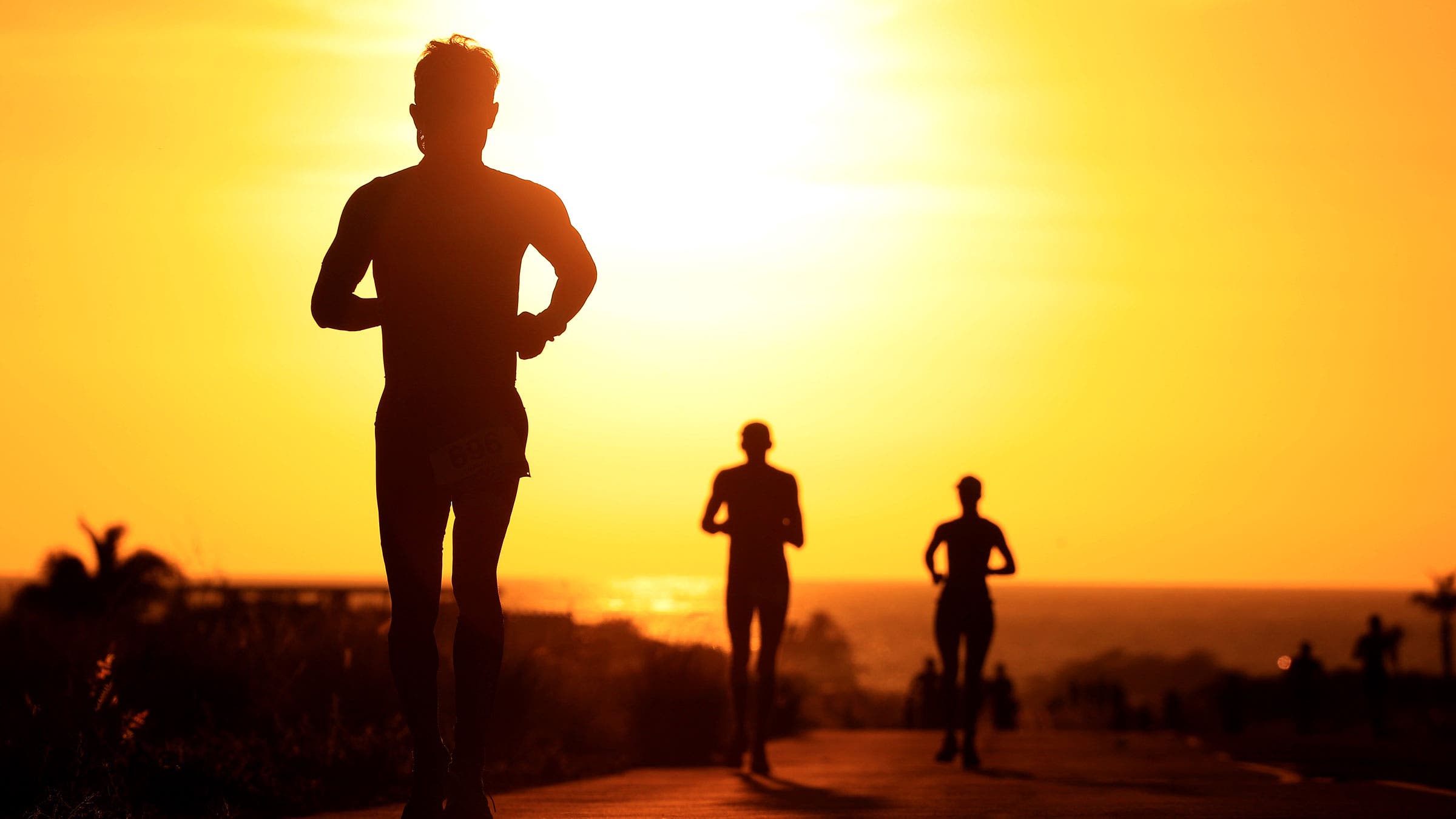
Transition and Ali’i Drive
Coming into T2 and making your way up Palani Road to the hot corner and onto the Kuakini Highway then down Hualalai Road and onto Ali’i might be the most invigorating part of your day.“After many hours of loneliness on the bike, being around cheering people gives you energy and makes you feel like a superhero,” McKee warned. “Running the first two miles without regard to your pacing will be the biggest mistake you can make during the day.”
Much of that same excitement continues as you go down and back on Ali’i to complete the first 10 miles of the run. The entire stretch is lined with spectators, and many are armed with super soakers, hoses, and sprinklers. Once back to Hualalai, Kuakini, and back up Palani, things start to get real. The run up Palani to the Queen K is steep, unshaded, and the spectators dwindle quickly.
Queen K and Energy Lab
The back half of an Ironman marathon is hard regardless of the course or conditions, but the Ironman World Championship offers an unparalleled level of toughness. Once out on the Queen K, you’ll experience what feels like endless miles of hearing only the sound of your wet feet hitting the pavement and seeing a seemingly endless highway ahead, nothing like the beautiful Hawaiian scenery you see on TV. At about mile 16, you’ll make a left turn into the Natural Energy Lab—where the race gets even tougher.“The Energy Lab offers even more sun exposure, the smell of the fish/brine processing plants, the extra humidity of the ocean, and the knowledge that you’re as far as can be from the finish line,” McKee explained.Another course change this year will see athletes come out of the Energy Lab and run North (away from the finish line) on a frontage road before looping back onto the Queen K. McKee warned to mentally prepare for the backtracking portion as it comes at one of the toughest parts of the course.Once you’re back on the Queen K, it’s time to head back to town. “Miles 20 to 23 feel like they will never end,” McKee said. “You’re once again on the highway and can see all the way into Kona. I break this part up into running to landmarks along the way.”
The final steep climb up before being able to descend on Palani will test your will to finish the race. Once across Kuakini and down Hualalai, it’s time to take in the magic that is the final stretch on Ali’I Drive.“You can hear the finish line, the roar of the crowd is deafening, and you are overcome with emotion,” McKee remembered.Then it’s on to the most famous finish line in the sport.
Gear
Dress in a way that will allow you to easily execute your heat-management strategies. Many professionals have donned unique gear such as the space-age looking Omius headband or a safari-style running hat. Race kits are available with heat-saving features like Coldblack technology and ice pockets to keep your core cool. When it comes to shoes, it’s safe to bet that at a race of this caliber nearly every athlete will be wearing a carbon-fiber super shoe. More on if that’s the right fit for your racing needs here.
Coach Rebecca’s Advice
“If I had to sum up the run in one word I would say: brutal,” she said. But the journey is worth the destination. “There is no finish line like the one in Kona,” continued McKee. “Take your time down the chute as it’s spectacular, emotional, and unlike anything else you’ll experience.”
RELATED: Characters Of Kona: The Energy Lab
Post-Race
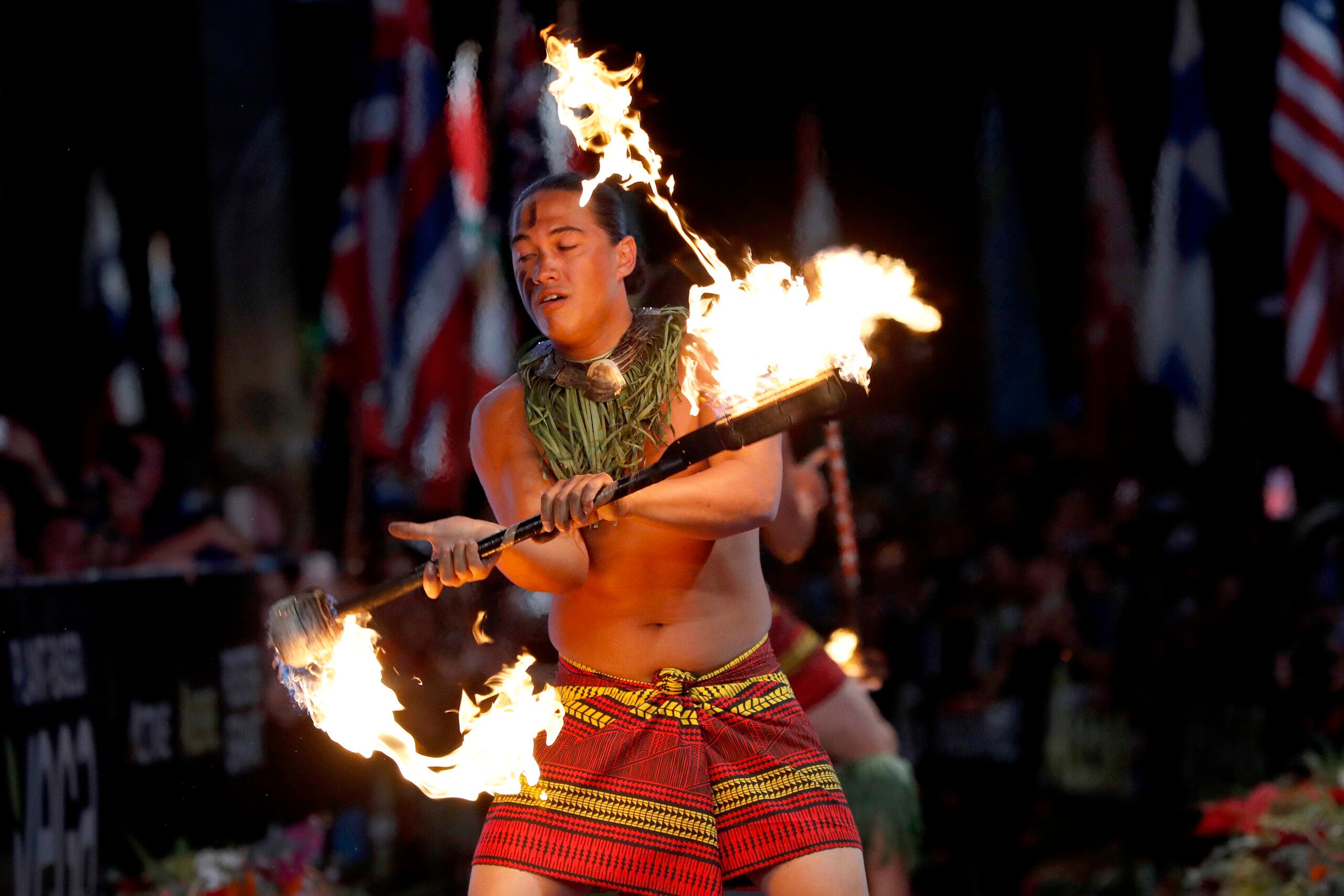
You made it! Now it’s time to recover and then go see the sights you’ve been avoiding throughout race week.
Coach Rebecca’s Recommendations
“The sightseeing and adventures are endless on the Island,” she said. “Some of my recommendations are the volcano, Waipio Valley, Pololu Valley, Akaka Falls, and swimming with the mantas. Beyond that, the fishing, golfing, coffee farms, farmer’s markets, and local restaurants all offer amazing experiences. I hope you take time after the race to let the Island be a part of your recovery, to give back to those that have given, and to share the excitement of the day with the locals who want to celebrate you.”
Can’t get enough Ironman World Championship coverage? Visit our Kona Hub for news, analysis, history, photo galleries, and so much more – new stories added daily from our team on the ground at the Big Island.